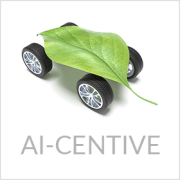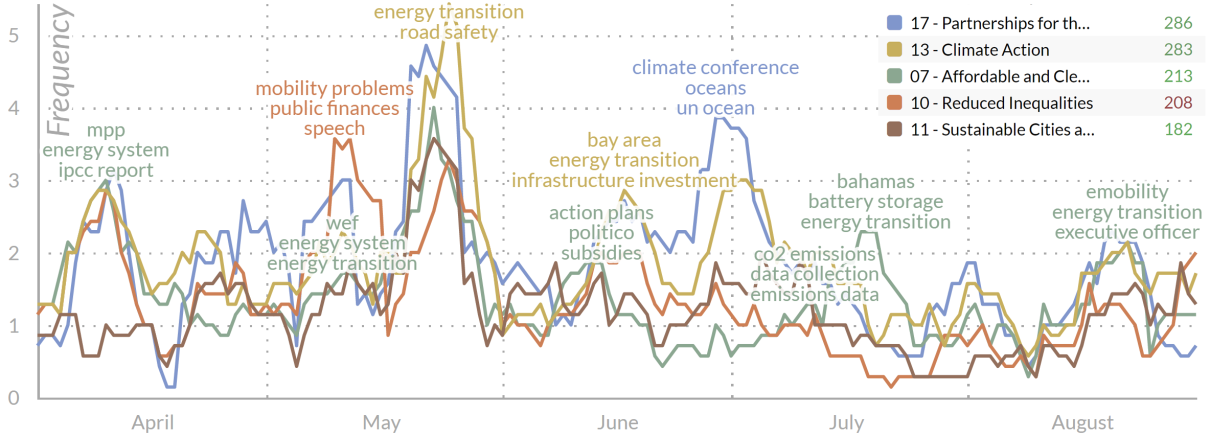Incentivization for Sustainable Mobility
The AI-CENTIVE research project advances the state of the art in AI research to build and manage a complex mobility data ecosystem from a wide range of content sources. This data ecosystem will serve as an enabler of new incentivization approaches to promote sustainable mobility. The core innovations of AI-CENTIVE will help to classify and customize incentives to reduce carbon emissions from the use of private cars and fossil fuel-based means of transportation. Actionable datasets on mobility choices and options are currently fragmented across data silos in different organizational networks.
Sharing these datasets via a common data ecosystem supports data sovereignty, security and privacy. Once properly trained, AI models will help explain how and why citizens make certain mobility choices. Prediction methods will build on multidimensional context parameters such as weather, the location and duration of upcoming events, or the availability of environmentally friendly options.
Sustainable Mobility
Customized incentives leveraging AI predictions aim to motivate citizens to adopt new options and overcome barriers to more sustainable behavior such as the need to sign up for a new service or the perceived convenience of traveling “as we have always done”. To achieve this, we need AI-based approaches to predict complex mobility behavior and optimize incentives – in a multidimensional manner, beyond currently available solutions. The project’s unique selling proposition stems from concurrently addressing a number of challenges:
- semantically integrating heterogeneous data from multiple sources into a dynamic mobility data ecosystem;
- understanding the evolving data ecosystem by means of a shared mobility knowledge graph;
- graph-based AI algorithms to learn from user mobility behavior and make predictions of future behavior and propose suitable incentives, and
- modeling different user mobility choices based on various incentive models in order to promote the most sustainable mobility behavior.
Explainable and understandable predictions help stakeholders to make informed decisions. Thereby, AI-CENTIVE promotes and supports more sustainable behavior. We will thoroughly evaluate the results to validate and continuously improve the approach. The results will enable and incentivize Austrian citizens to find more sustainable mobility choices, increasing awareness and affecting public opinion to develop a more positive attitude towards those choices.
AI-Driven Incentivization and Impact Optimization
webLyzard will explore the specific impact of AI-driven incentives for sustainable mobility (electric or hydrogen-powered transportation, cycling, walking, etc.), which will include both a static analysis according to well-defined measures based on properties and sustainable activity data, as well as a dynamic analysis that will apply the prediction models to identify impacts in simulated future contexts. The workflow consists of three parts: impact measurement, incentive schemes and behavioral learning:
- Impact measurement is applied through monitoring the public opinion about sustainable mobility and extracting change in affective indicators towards it – i.e., are people more positive, less fearful, more excited, etc.?
- The incentivization scheme defines when and how sustainable activities may be incentivized through variants, e.g. rankings, points or discount schemes connected to the public mood vis-a-vis those activities.
- Finally, behavioral learning identifies patterns that impact user behavior and mobility choices. The goal is to learn the contexts that foster new incentivization schemes and identify schemes that promote sustainable mobility choices in specific contexts that we can anticipate or influence.
Visualizing the Impact of Incentive Schemes
The predicted effects on mobility from the AI models will be visualized and explored through a visual analytics dashboard. The dashboard will visualize the impact of mobility incentive schemes on public opinion. We will synchronize these visualizations with dashboard widgets representing other metadata dimensions – e.g., trend charts for the temporal context, or word trees for the lexical context. The visualization engine will build on insights gained from the SDG Intelligence platform developed for the United Nations Environment Programme (UNEP).
Mobility coverage classified by Sustainable Development Goals (SDGs)
The prototype will be trialed with professional stakeholders in the mobility domain. The evaluation will cover both usability and potential impact (by modeling impact on mobility if insights discovered via the dashboard were used in stakeholder planning and decision making). MUVe, a Vienna-based e-moped provider, will participate in this evaluation as an associated use case partner.
AI-CENTIVE Project Details
Duration: 36 Months
Consortium: webLyzard technology, MODUL Technology, Data Intelligence Offensive e.V., ummadum Service GmbH, Universität für Bodenkultur Wien, Zentralanstalt für Meteorologie und Geodynamik
Funding: Federal Ministry for Climate Action, Environment, Energy, Mobility, Innovation and Technology (BMK), ICT of the Future Program




